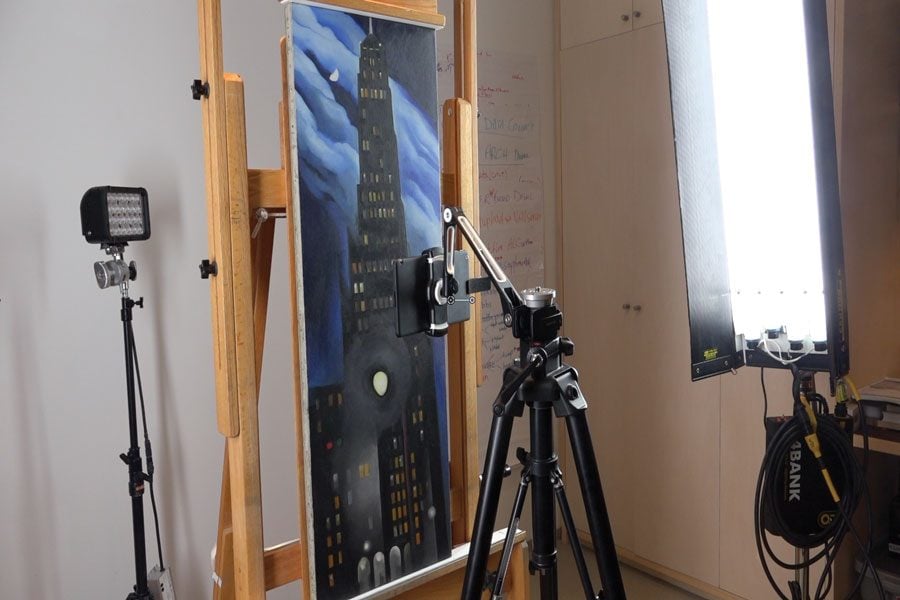Northwestern collaborates with the Georgia O’Keeffe Museum to develop ‘art acne’ tracking technology
Georgia O’Keeffe’s painting “Ritz Tower.” A team from NU and the Georgia O’Keeffe Museum are investigating the tiny bumps, or “art acne,” that have developed over time on Georgia O’Keeffe’s artwork.
February 28, 2019
A multidisciplinary team from Northwestern and the Georgia O’Keeffe Museum investigated the tiny protrusions that have developed over time on O’Keeffe’s artwork and built an app that tracks an artwork’s surface.
These bumps, dubbed “art acne” by researchers, can pop through the surface of the painting or fall off the canvas, leaving an impression the artist didn’t intend.
Dale Kronkright, the head of conservation at the Georgia O’Keeffe Museum in Santa Fe, New Mexico, said these metal soap bumps resulted from the fatty acids of the paint reacting with lead and zinc in the pigment. Kronkright said that left unattended, these blisters leave various impressions on the surface of the canvas — in some cases, small white dots — and ultimately change the image the artist wanted to convey.
“Conservators then have to fill that loss, and we have to retouch it to match the surrounding colors, ” Kronkright said. “So what we don’t know is, are some of the materials and techniques we use to inpaint those losses actually accelerating it?”
These protrusions are not unique to O’Keeffe’s work. Kronkright said these metal soaps were first spotted on a Rembrandt painting in 1996 but are now widely seen on 20th-century paintings.
The app to analyze this “acne” is still in its testing phase, said postdoctoral researcher Florian Willomitzer, who managed the 3D surface evaluation algorithms. His work focuses on the three-dimensional measurement of both the surface of the painting and the blisters to track the size of the protrusions over time.
Willomitzer said this app makes this process much more convenient compared to current technology, which is bulky and difficult to move.
“You either have to transport the device to the artwork or the artwork to the device,” Willomitzer said. “And if you have something like a painting that is sensitive to ambient influences, it is not possible to transport. Some paintings are so large, they don’t fit in the device.”
Given these challenges, creators of the technology focused on improving ease and mobility.
“We want to take this measurement principle and implement it in a mobile device,” Willomitzer said. “Everyone has a mobile device, and in the ideal case, you just wave your device over the object and then get a 3D surface construction.”
Willomitzer hopes to release the app to conservators by the end of the year.
“The hope is that this tool will proliferate and be used widely by museums and provide information about the health of a painting and how it will look further in the future,” said McCormick Prof. Aggelos Katsaggelos, who developed custom algorithms to understand the surface information.
Kronkright said the big breakthrough in the app is in developing the ability to quantitatively measure the deterioration of artworks.
“Up to this point, we’ve been working in the dark,” Kronkright said. “The advantage of digital imaging systems and digital imaging algorithms is about to shine a very bright light in a very dark room.”
Email: [email protected]


